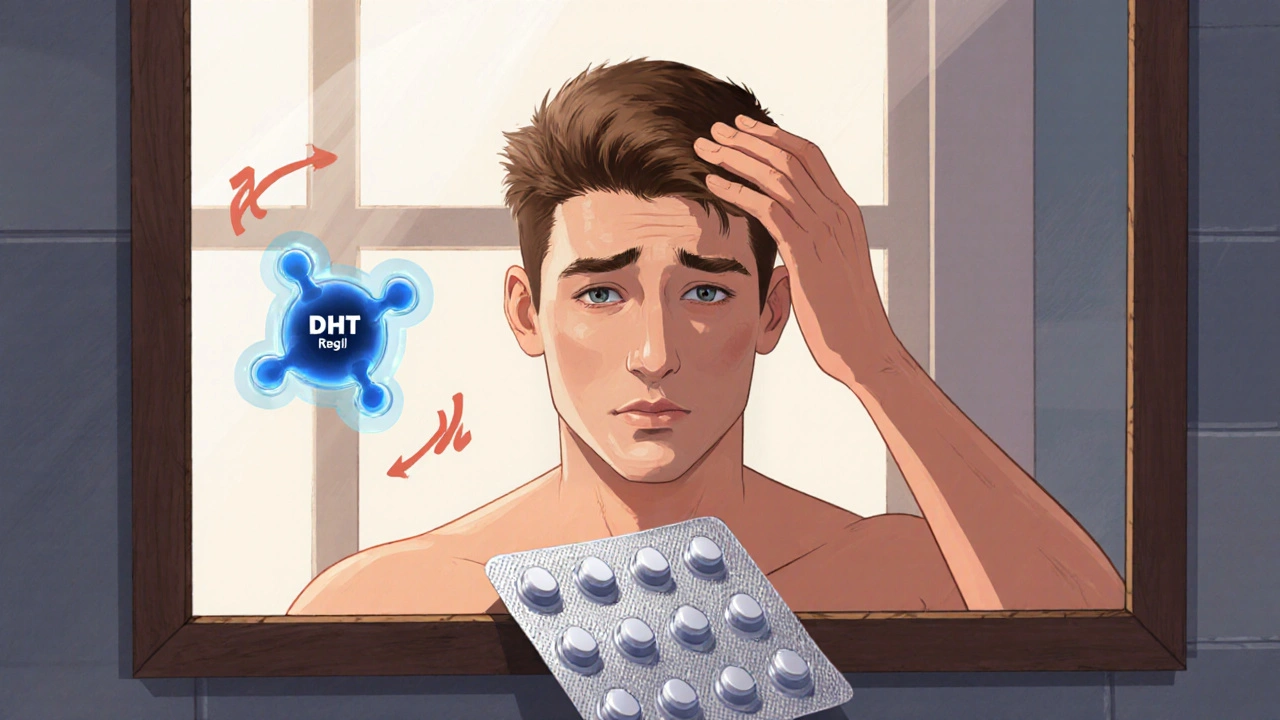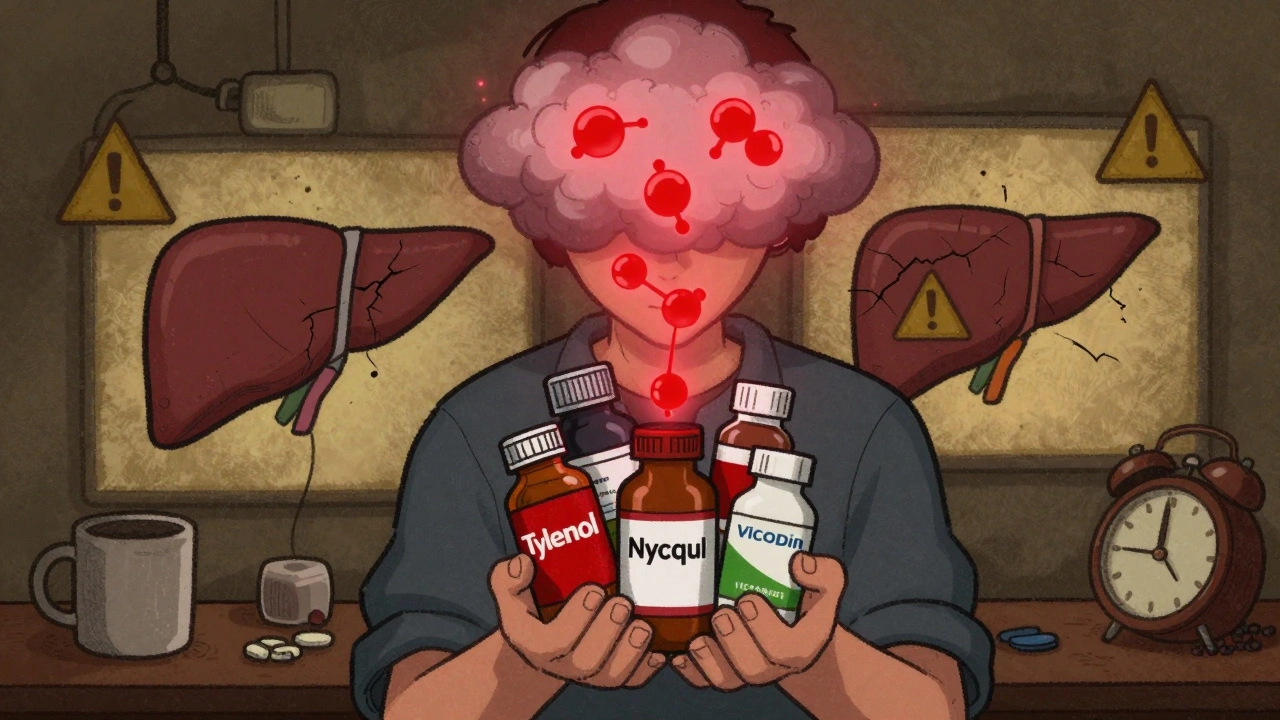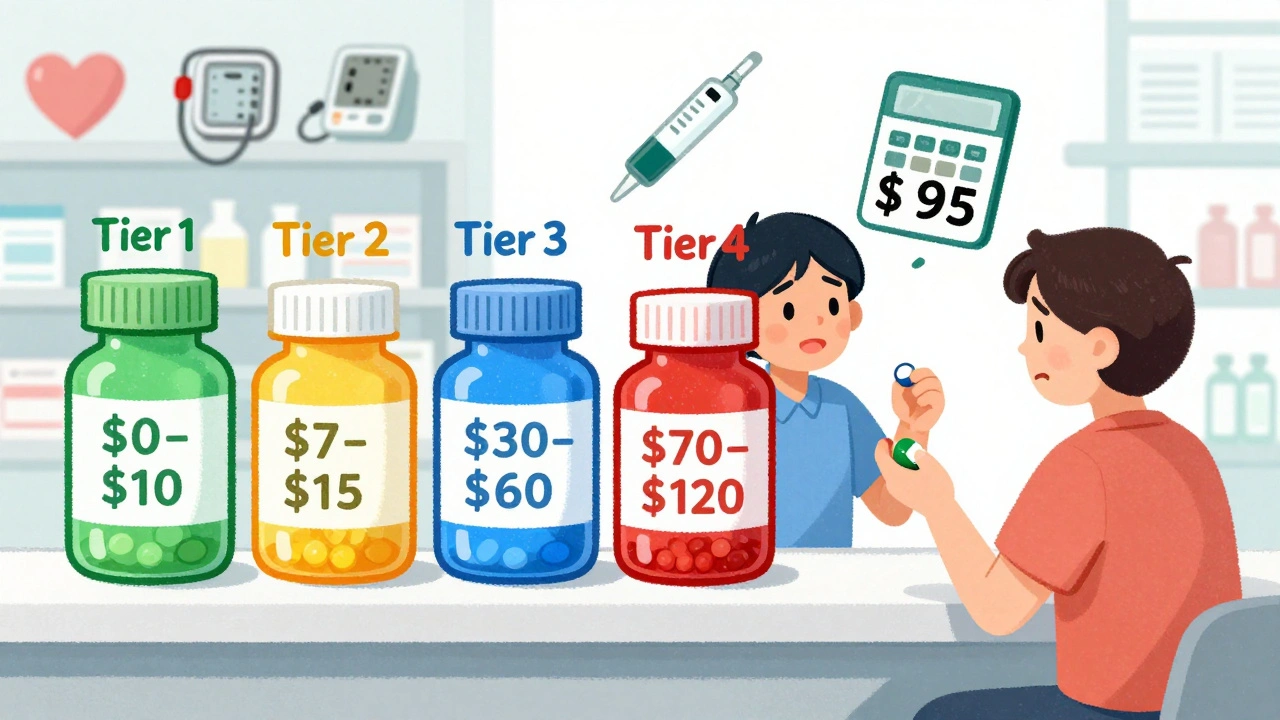Treatment Selector for Hair Loss
Find Your Best Treatment Option
Answer a few questions to see which hair loss treatment might work best for you based on your hair loss severity, budget, and tolerance for side effects.
Your Recommended Treatments
Quick Takeaways
- Finrest (Finasteride) works by blocking DHT production, delivering 20‑30% hair‑regrowth in clinical trials.
- Dutasteride is a stronger 5‑alpha‑reductase inhibitor, but its side‑effect profile is slightly higher.
- Topical Minoxidil boosts blood flow to follicles and can be combined with oral agents for additive results.
- Natural options like Saw palmetto offer modest DHT reduction with fewer systemic risks.
- Hair transplant delivers permanent coverage but involves surgery and higher costs.
When it comes to treating male‑pattern baldness, Finrest (Finasteride) is an oral 5‑alpha‑reductase inhibitor that reduces dihydrotestosterone (DHT) levels to slow hair loss. If you’re weighing Finrest against other options, keep these factors in mind: effectiveness, safety, cost, and how the treatment fits into your daily routine.
What is Finrest (Finasteride) and How Does It Work?
Finrest contains 1 mg of finasteride per tablet, the dose approved for androgenetic alopecia in men. By inhibiting the type II isoform of the enzyme 5‑alpha‑reductase, it cuts the conversion of testosterone to DHT by about 70 % in scalp tissue. Lower DHT means fewer follicles shrink, and over six months many users notice a visible reduction in shedding.
Key attributes:
- Drug class: 5‑alpha‑reductase inhibitor.
- Typical regimen: One tablet daily, taken with or without food.
- Onset of effect: 3‑6 months of consistent use.
- Common side effects: Decreased libido, erectile dysfunction, and occasional breast tenderness.
Top Alternatives to Finrest
Below are the most frequently discussed alternatives. Each targets hair loss a bit differently, allowing you to pick the best match for your goals and tolerance.
Dutasteride is a dual‑type I/II 5‑alpha‑reductase inhibitor that cuts DHT levels by up to 90 %. It’s FDA‑approved for benign prostatic hyperplasia (BPH) but is used off‑label for hair loss.
Minoxidil is a topical vasodilator that stimulates follicle activity and extends the anagen phase. Available in 2 % (over‑the‑counter) and 5 % (prescription) solutions.
Saw palmetto is a plant extract that weakly blocks 5‑alpha‑reductase and may lower scalp DHT. Often taken as 320 mg capsules daily.
Hair transplant is a surgical procedure that moves healthy follicles from a donor area to balding zones. Techniques include FUT (strip) and FUE (single‑unit extraction).
Ketoconazole shampoo is an anti‑fungal wash that also reduces scalp inflammation and may cut DHT locally. Used 2‑3 times per week.

Side‑by‑Side Comparison
| Attribute | Finrest (Finasteride) | Dutasteride | Minoxidil (Topical) | Saw Palmetto | Hair Transplant |
|---|---|---|---|---|---|
| Drug class | 5‑alpha‑reductase inhibitor (type II) | 5‑alpha‑reductase inhibitor (type I & II) | Vasodilator / follicle stimulant | Botanical DHT blocker | Surgical relocation of follicles |
| FDA status (hair loss) | Approved | Off‑label | OTC (2 %) / Rx (5 %) | Supplement (dietary) | Device‑approved (procedure) |
| Typical dose | 1 mg daily | 0.5 mg daily | 1 ml twice daily | 320 mg daily | 1-4 sessions (depends on coverage) |
| Avg. hair regrowth | 20‑30 % (clinical trials) | 25‑35 % (studies) | 10‑15 % (monotherapy) | 5‑10 % (limited data) | Permanent >90 % survival when done by expert |
| Common side effects | Sexual dysfunction, mood changes | Higher incidence of sexual side‑effects | Scalp irritation, itching | Usually none, rare GI upset | Scarring, infection, graft shock |
| Cost (US, 1 yr) | ≈ $200 | ≈ $400 | ≈ $120 (2 %); $300 (5 %) | ≈ $150 | $3,000-$12,000 |
Pros and Cons of Each Option
Finrest (Finasteride) - Pros: Proven efficacy, easy oral dosing, relatively low cost. Cons: Systemic side effects that can affect libido or mood; requires prescription.
Dutasteride - Pros: Stronger DHT suppression, slightly higher regrowth numbers. Cons: Higher risk of sexual side effects, off‑label use means insurance may not cover.
Minoxidil - Pros: Non‑systemic, can be used by women, works well in combination. Cons: Requires twice‑daily application, scalp irritation common, results plateau after 12 months.
Saw palmetto - Pros: Natural, minimal side effects, inexpensive. Cons: Limited clinical evidence, modest results, not a substitute for stronger meds.
Hair transplant - Pros: Permanent, natural‑looking restoration, no daily medication. Cons: Surgical risks, high upfront cost, success depends on surgeon skill and donor hair quality.
How to Choose the Right Treatment for You
- Assess severity. Early thinning (Norwood II‑III) often responds well to medication alone; advanced loss (Norwood V‑VI) may need surgical options.
- Consider health profile. Men on prostate medication may already be on a 5‑alpha‑reductase inhibitor; adding another can increase side‑effect risk.
- Set a timeline. Oral meds need 3‑6 months to show benefit; surgical planning takes 6‑12 months from consultation to final result.
- Budget. Monthly oral drugs cost a few hundred dollars a year; a transplant can run into thousands - decide what fits your finances.
- Discuss with a professional. Dermatologists or hair‑restoration surgeons can run blood tests, evaluate scalp health, and tailor a combo regimen (e.g., Finrest + minoxidil).

Real‑World Scenarios
Case 1 - John, 28, recent thinning. He started Finrest 1 mg daily after a dermatologist visit. After four months, his shedding dropped dramatically and a small patch of new growth appeared. He added a 5 % minoxidil foam twice daily for extra density, seeing a 35 % overall improvement.
Case 2 - Carlos, 45, Norwood V. Oral meds gave only modest benefit. He opted for a FUE transplant performed by a board‑certified surgeon, achieving 92 % graft survival. He continues a light minoxidil spray to keep non‑transplanted areas healthy.
Case 3 - Amir, 34, concerned about side effects. He tried saw palmetto for six months; DHT levels dropped modestly, but hair density remained unchanged. He later switched to Finrest after a thorough discussion about reversible side effects and felt comfortable proceeding.
Monitoring Progress and When to Adjust
Track hair loss with monthly photos taken under the same lighting. If after six months there’s no improvement or side effects become bothersome, talk to your doctor about dose adjustment, switching agents, or adding a topical.
Blood tests are rarely needed for Finrest or Dutasteride, but liver function monitoring may be advised for high‑dose off‑label use.
Bottom Line
There’s no one‑size‑fits‑all answer. Finrest remains the go‑to oral medication for many men because of its solid track record and manageable cost. Dutasteride can edge out Finrest in potency but brings a higher side‑effect ceiling. Topical minoxidil pairs nicely with either oral drug, especially for those who want a non‑systemic boost. Natural extracts like saw palmetto suit users cautious about prescription meds, though they won’t replace stronger therapies. For permanent, high‑visibility restoration, hair transplantation delivers the most dramatic results, albeit at a higher price and with surgical considerations.
Can I use Finrest and minoxidil together?
Yes. Combining the oral DHT blocker with a topical vasodilator is a common strategy that can improve overall hair density. Most dermatologists recommend applying minoxidil in the morning and taking Finrest at night to avoid interference.
Is Dutasteride more effective than Finrest?
Clinical studies show Dutasteride suppresses scalp DHT by about 90 % versus 70 % for Finrest, leading to slightly higher regrowth percentages. However, the side‑effect rate is also higher, so many patients start with Finrest and switch only if needed.
What are the main risks of long‑term Finrest use?
The most reported issues are sexual dysfunction, decreased libido, and occasional mood changes. These effects are reversible after stopping the medication, but anyone experiencing persistent symptoms should discuss alternatives with their doctor.
Are there any diet or lifestyle changes that boost Finrest results?
A balanced diet rich in zinc, biotin, and omega‑3 fatty acids supports overall hair health. Reducing stress, quitting smoking, and limiting alcohol can also improve outcomes when combined with medication.
How long does a hair transplant last?
Transplanted follicles are taken from a permanent donor zone, so they typically last a lifetime. Future hair loss in non‑transplanted areas may still occur, so many patients maintain medical therapy after surgery.







Christopher Burczyk
October 19, 2025 AT 18:06Finrest (finasteride) operates as a selective type‑II 5‑alpha‑reductase inhibitor, reducing scalp dihydrotestosterone by approximately 70 %. Clinical data consistently demonstrate a 20‑30 % increase in hair density after six months of adherence, which justifies its status as first‑line therapy. Its oral administration simplifies patient compliance relative to topical agents, and the generic cost remains under $200 per annum in most markets. Nevertheless, the drug’s systemic exposure predisposes a subset of users to sexual dysfunction, mood alteration, and rare gynecomastia, necessitating baseline counseling. The pharmacokinetic profile-half‑life of roughly six hours with steady‑state reached after five days-permits once‑daily dosing without significant food effects. Importantly, finasteride does not address the inflammatory component of androgenic alopecia, so adjunctive minoxidil often yields additive benefits. For patients with early‑stage Norwood II‑III patterns, monotherapy may suffice; however, progression to Norwood V‑VI typically warrants combination therapy or surgical consideration. In summary, the risk‑benefit calculus favors Finrest for most men, provided that clinicians monitor adverse events and educate patients on realistic timelines.
dennis turcios
October 19, 2025 AT 20:53From a data‑driven perspective the superiority claim of Finrest is overstated. The marginal gain over placebo in the largest double‑blind trials hovers around 2‑3 % when intention‑to‑treat analysis is applied. Moreover, the side‑effect incidence, although statistically low, carries a disproportionate impact on quality of life. In practice many patients discontinue within the first year because of libido decline, rendering the modest regrowth moot. The cost‑effectiveness ratio therefore deteriorates sharply when adverse events are accounted for. A pragmatic approach would prioritize non‑systemic options before committing to a lifelong oral regimen.
Leo Chan
October 20, 2025 AT 01:03Hey folks, great rundown! If you’re on the fence, remember that consistency is key – even a modest 20 % improvement can look huge once you start seeing less shedding. Pairing Finrest with a 5 % minoxidil foam often pushes results into the 35‑40 % range, and the psychological boost of seeing new sprouts is priceless. Stay patient, track progress with monthly photos, and don’t be afraid to ask your dermatologist about combination therapy. You’ve got this!
jagdish soni
October 20, 2025 AT 03:50One must contemplate the existential irony of a molecule that arrests the march of time upon the scalp yet accelerates the inner turmoil of the self absence of punctuation the very act of silencing nature's cascade becomes a metaphysical rebellion against the inevitability of baldness and in doing so we trade hair for a fragmented identity the pursuit of finasteride thus mirrors the philosopher's quest for permanence in a transitory world
Latasha Becker
October 20, 2025 AT 06:36The mechanistic pathway of Finrest can be delineated via its high affinity for the androgen receptor binding domain, effectuating a downstream attenuation of dihydrotestosterone synthesis. Pharmacodynamic parameters such as IC₅₀ values (~5 nM) underscore its potency relative to alternative agents like dutasteride (IC₅₀ ~0.5 nM). However, the pharmacovigilance literature reports a post‑marketing incidence of sexual adverse events approximating 1.8 %, which must be juxtaposed against the statistically significant increase in vertex hair count (p < 0.01). Clinicians should therefore employ a risk‑stratified algorithm incorporating baseline hormonal panels, psychosocial assessments, and longitudinal dermoscopic monitoring.
Madhav Dasari
October 20, 2025 AT 09:23Bro, I get the anxiety about side effects, but think about the confidence boost when you finally see those tiny hairs popping up! I've seen friends go from looking like a cue ball to actually feeling good about their mirrors after just a few months of Finrest plus a dab of minoxidil. It's not a miracle overnight, but it's a journey worth taking if you want to keep the hair you still have. Keep the routine tight, stay chill, and celebrate every new strand – the big picture matters!
DHARMENDER BHATHAVAR
October 20, 2025 AT 12:10Finrest's efficacy can be summarized succinctly: 1 % daily dosing, 3‑6 months to initial response, 20‑30 % average regrowth, potential sexual side effects. Monitoring is advised at six‑month intervals. Combination with topical minoxidil may enhance outcomes.
Kevin Sheehan
October 20, 2025 AT 14:56When evaluating therapeutic options for androgenic alopecia, one must balance quantitative efficacy with qualitative impact on patient well‑being. Finrest offers a moderate increase in hair density, but its systemic nature introduces variables that extend beyond mere follicular biology. In contrast, topical minoxidil operates locally, presenting fewer systemic concerns while delivering modest gains. A synthesis of both modalities, tailored to individual risk tolerance, often produces the most harmonious result-an equilibrium between physiological benefit and personal comfort.
Jameson The Owl
October 20, 2025 AT 17:43Let me tell you why the whole Finrest hype is just another ploy by Big Pharma to keep us in perpetual dependency the drug was never meant to be a cure it was designed as a biochemical leash to ensure billions in recurring prescriptions the clinical trials were cherry‑picked the real numbers show a negligible difference from placebo yet the marketing departments spin 20‑30 % hair regrowth as a miracle headline meanwhile the side‑effects are quietly filed under “rare” but they affect millions of men who are too embarrassed to speak out the suppression of DHT is not a benign tweak of a hormone it disrupts the entire endocrine feedback loop leading to mood swings libido loss and even prostate issues which the industry conveniently downplays the alternative natural compounds like saw palmetto are dismissed as “unproven” while they carry far fewer systemic risks the truth is that any long term oral anti‑androgen will have trade‑offs and the only way to break free is to demand transparency proper independent studies and to consider non‑pharmaceutical options like hair transplantation which, despite its cost, offers a permanent solution without the need for daily pills the conspiracy is clear the regulators are in the pocket of the manufacturers and the public is left with a false sense of hope the only real cure is to empower patients with unbiased data and to push for safer, evidence‑based treatments
Sarah Unrath
October 20, 2025 AT 20:30i think finrest works but u gotta be careful.
Penny Reeves
October 20, 2025 AT 23:16While the article enumerates the standard pharmacologic options, it overlooks the fundamental issue of patient heterogeneity. Not every individual will respond to a uniform 1 mg dosing schedule, yet the piece presents Finrest as a one‑size‑fits‑all solution. Moreover, the cost analysis fails to incorporate insurance copays, pharmacy discounts, or the hidden expense of regular follow‑up appointments. The discussion of side effects is also superficial; sexual dysfunction can manifest in nuanced ways that impact relationships, which a simple bullet point cannot capture. In short, the comparison table is informative but ultimately reductive, necessitating a more nuanced, patient‑centered approach.
Catherine Viola
October 21, 2025 AT 02:03Ms. Reeves raises valid points concerning economic variables; however, it is imperative to acknowledge that the pharmaceutical pricing model operates under a veil of governmental collusion designed to suppress affordable alternatives. Independent meta‑analyses, often suppressed, demonstrate that the marginal benefit of finasteride over placebo diminishes when adjusted for socioeconomic status. Consequently, the purported “one‑size‑fits‑all” narrative is not merely an oversimplification but a strategic façade to maintain market dominance. A rigorous, transparent audit of cost‑benefit ratios is essential before endorsing Finrest as a universal remedy.
Christian Georg
October 21, 2025 AT 04:50Great summary, Christopher! To add a practical tip, many clinicians suggest taking Finrest at night to reduce any potential mild nausea and pairing it with a biotin‑rich diet for synergistic support 😊. Also, checking baseline liver function tests can preempt rare hepatotoxic concerns. Consistent photo documentation every 4‑6 weeks really helps patients see incremental progress that can otherwise feel imperceptible.